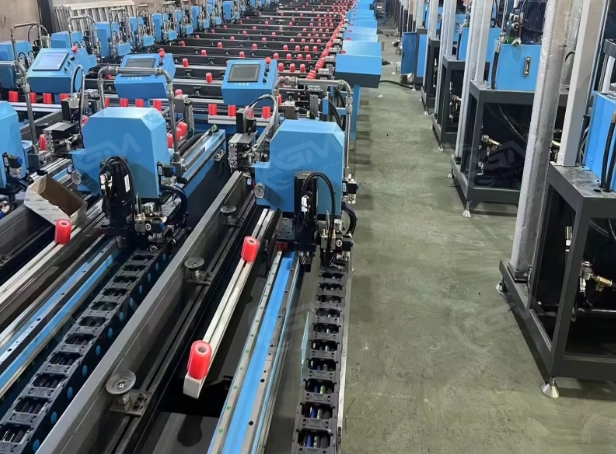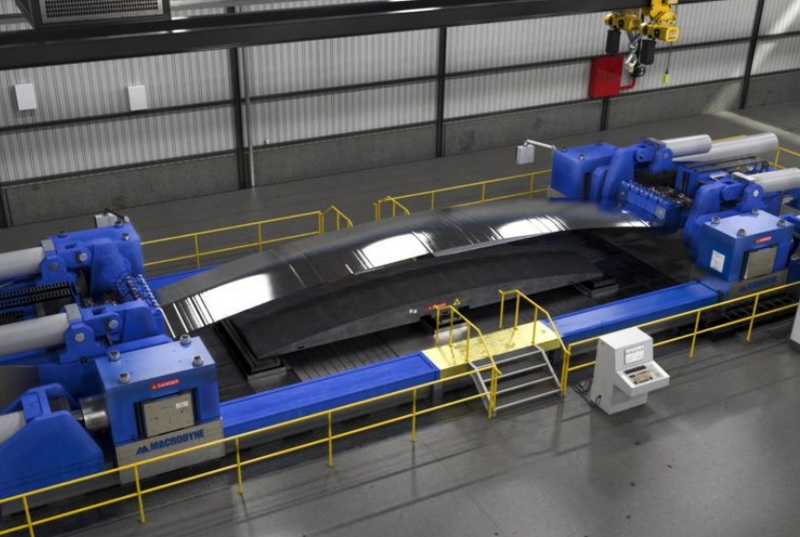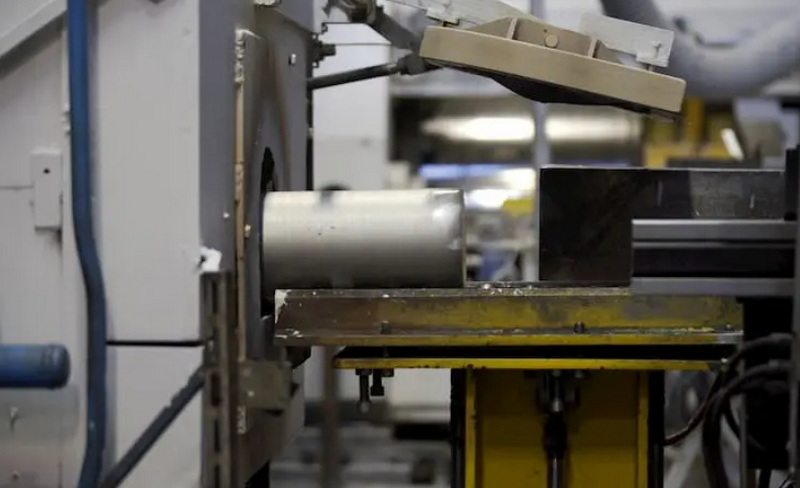Content Menu
● Understanding Used Extrusion Blow Moulding Machinery
● Key Risks of Purchasing Used Extrusion Blow Moulding Machinery
>> 1. Mechanical Wear and Tear
>> 2. Hidden Damage and Safety Hazards
>> 3. Obsolete Technology and Compatibility Issues
>> 4. Limited or No After-Sales Support
>> 5. Uncertain Machine History and Maintenance Records
>> 6. Potential for Production Inefficiencies
>> 7. Compliance and Regulatory Concerns
● How to Mitigate Risks When Buying Used Extrusion Blow Moulding Machinery
>> 1. Conduct Thorough Inspections
>> 2. Request Maintenance and Usage History
>> 3. Evaluate Technological Compatibility
>> 4. Verify After-Sales Support Availability
>> 5. Consider Professional Assessment
>> 6. Plan for Maintenance and Upgrades
● Common Problems in Used Extrusion Blow Moulding Machinery
● Advantages of Used Extrusion Blow Moulding Machinery Despite Risks
● Conclusion
● FAQ
>> 1. What should I inspect first when buying used extrusion blow moulding machinery?
>> 2. How important is the maintenance history of used blow moulding machines?
>> 3. Can used extrusion blow moulding machines handle modern plastic materials?
>> 4. What are common defects caused by worn extrusion blow moulding machinery?
>> 5. Is after-sales support available for used extrusion blow moulding machinery?
● Citations:
Purchasing used extrusion blow moulding machinery can be an attractive option for manufacturers seeking to expand or upgrade their production capabilities while managing costs. However, this approach carries inherent risks that require careful consideration. This comprehensive article explores the various risks associated with buying used extrusion blow moulding machinery, providing insights to help buyers make informed decisions and mitigate potential pitfalls.

Understanding Used Extrusion Blow Moulding Machinery
Extrusion blow moulding machinery is widely used to manufacture hollow plastic products such as bottles, containers, drums, and automotive components. These machines work by extruding a molten plastic tube (parison) which is then inflated inside a mold to form the desired shape. Used extrusion blow moulding machinery refers to equipment that has been previously owned and operated, often available at a significantly reduced price compared to new machines[5][9].
Key Risks of Purchasing Used Extrusion Blow Moulding Machinery
1. Mechanical Wear and Tear
One of the most significant risks of buying used extrusion blow moulding machinery is the unknown extent of mechanical wear and tear. Components such as screws, barrels, molds, and extruders may have experienced considerable use, leading to reduced efficiency or imminent failure. Worn parts can cause uneven plasticization, poor melt quality, or inconsistent product dimensions, which directly affect product quality[1][7].
2. Hidden Damage and Safety Hazards
Used machines may have hidden damage not immediately visible during inspection. This can include structural fatigue, corrosion, or damage to critical safety features. Safety hazards pose risks not only to production but also to operators. Machines with compromised safety systems can result in accidents or regulatory non-compliance, leading to costly downtime or legal consequences[1][2].
3. Obsolete Technology and Compatibility Issues
Older used extrusion blow moulding machines might lack modern technological advancements such as servo-driven systems, advanced control interfaces, or energy-efficient components. This can result in higher operating costs and lower productivity compared to newer models. Additionally, compatibility issues may arise if the used machine cannot handle newer materials or meet current production specifications, limiting flexibility[5][9].
4. Limited or No After-Sales Support
After-sales service is crucial for maintaining blow moulding machinery. Used machines, especially those purchased from secondary markets without manufacturer support, may lack warranties or access to spare parts and technical assistance. This can lead to prolonged downtime and increased maintenance costs if the machine breaks down[1][2][5].
5. Uncertain Machine History and Maintenance Records
Without detailed maintenance records, it is difficult to assess how well the used extrusion blow moulding machinery was cared for by previous owners. Poor maintenance can accelerate wear, cause frequent breakdowns, and reduce the machine's lifespan. Buyers risk acquiring equipment with unresolved issues or improper repairs that could affect performance[1][6].
6. Potential for Production Inefficiencies
Used machines may not operate at optimal speeds or produce consistent quality products due to wear, outdated design, or lack of calibration. This can increase scrap rates, energy consumption, and labor costs. Production inefficiencies ultimately affect profitability and can negate the initial cost savings of purchasing used equipment[4][7].
7. Compliance and Regulatory Concerns
Older used extrusion blow moulding machines may not comply with the latest industry standards, safety regulations, or environmental requirements. This can restrict their use in certain markets or industries and may require costly upgrades or retrofits to meet compliance[5].

How to Mitigate Risks When Buying Used Extrusion Blow Moulding Machinery
1. Conduct Thorough Inspections
Perform detailed inspections focusing on mechanical condition, wear, safety features, and overall cleanliness. Check for signs of corrosion, cracks, or damage to the extruder, molds, and electrical systems. Testing the machine under operating conditions can reveal performance issues[1][2].
2. Request Maintenance and Usage History
Ask the seller for comprehensive maintenance logs, repair records, and operational history. Well-documented service records indicate responsible ownership and can provide insights into the machine's reliability[1][6].
3. Evaluate Technological Compatibility
Ensure the used machine's technology aligns with your production needs, including material compatibility, product design, and output volume. Consider whether the machine supports modern control systems and energy-efficient operation[5][9].
4. Verify After-Sales Support Availability
Purchase from reputable dealers or platforms that offer warranties, technical support, and access to spare parts. This reduces the risk of extended downtime and costly repairs[5].
5. Consider Professional Assessment
Engage experts or third-party inspectors specializing in blow moulding machinery to assess the equipment before purchase. Their expertise can uncover hidden defects and provide an objective evaluation[1][5].
6. Plan for Maintenance and Upgrades
Budget for immediate maintenance, part replacements, or upgrades needed to bring the used machine to optimal operating condition. Preventive maintenance is crucial to extend the machine's service life[6].
Common Problems in Used Extrusion Blow Moulding Machinery
Understanding typical issues that arise in extrusion blow moulding machines can help buyers identify red flags:
- Uneven melt temperature or poor plasticization leading to defective products[7].
- Extruder screw or barrel wear causing inconsistent extrusion and melt flow[1][7].
- Air leakage around blow pinholes affecting product inflation quality[7].
- Mold temperature instability resulting in surface defects or warping[7].
- Contamination or foreign matter in raw materials or machine components causing discoloration or streaks[7].
- Mechanical misalignment or damage to molds and flow paths causing product defects[7].
Advantages of Used Extrusion Blow Moulding Machinery Despite Risks
Despite the risks, purchasing used extrusion blow moulding machinery offers notable benefits:
- Cost Savings: Used machines can cost significantly less than new ones, offering a lower entry barrier for businesses[5].
- Faster Acquisition: Used equipment is often available immediately, avoiding long lead times associated with new machines[5].
- Proven Performance: Some used machines have a track record of reliable operation, allowing buyers to assess their suitability based on past use[1].
- Environmental Benefits: Reusing machinery reduces waste and resource consumption compared to manufacturing new equipment.
Conclusion
Purchasing used extrusion blow moulding machinery presents a viable opportunity for manufacturers to enhance production capacity at a reduced cost. However, it carries substantial risks including mechanical wear, hidden damage, outdated technology, limited support, and potential compliance issues. Buyers must conduct thorough due diligence, including detailed inspections, verifying maintenance history, assessing technological compatibility, and ensuring after-sales support availability. Engaging experts for professional assessments and planning for maintenance and upgrades further mitigates risks. With careful evaluation and strategic planning, the benefits of cost savings and quicker acquisition can outweigh the risks, enabling successful integration of used extrusion blow moulding machinery into production lines.

FAQ
1. What should I inspect first when buying used extrusion blow moulding machinery?
Check the mechanical condition of critical components such as the extruder screw and barrel, molds, and electrical systems. Look for signs of wear, corrosion, damage, and verify safety features are intact[1][2].
2. How important is the maintenance history of used blow moulding machines?
Very important. Maintenance records provide insight into how well the machine was cared for and help predict future reliability and performance[1][6].
3. Can used extrusion blow moulding machines handle modern plastic materials?
It depends on the machine's design and technology. Some older machines may not be compatible with newer materials or formulations, so verify material compatibility before purchase[5][9].
4. What are common defects caused by worn extrusion blow moulding machinery?
Common defects include uneven wall thickness, surface streaks, discoloration, poor inflation, and inconsistent product dimensions due to issues like screw wear or temperature instability[7].
5. Is after-sales support available for used extrusion blow moulding machinery?
It varies. Purchasing from reputable dealers or platforms often includes warranties and technical support, but buying from private sellers may lack such benefits. Verify support options before buying[5].
Citations:
[1] https://www.jwellextrusions.com/matters-needing-attention-in-purchasing-blow-molding-machine-and-factors-affecting-its-life.html
[2] https://www.tzdegree.com/news/precautions-for-the-purchase-of-blow-molding-54572748.html
[3] https://www.youlizn.com/news/blow-molding-machine-frequently-asked-questions.html
[4] https://www.linkedin.com/pulse/how-solve-common-problems-blow-molding-machines-products-ray-wang-dxlxc
[5] https://www.exapro.com/plastic-rubber-blowmoulding-machines-c143/
[6] https://www.tech-long.com/a-how-to-maintain-blow-molding-machine.html
[7] https://www.chinaplastictech.com/extrusion-blow-molding-failures-and-remedies.html/
[8] https://www.moldingmachinetepai.com/resources/bottle-blowing-machine-faqs-guide.html
[9] https://www.yankangmachine.com/types-of-blow-molding-machines/
[10] https://www.tzdegree.com/news/what-issues-should-we-pay-attention-to-when-pu-83885598.html
[11] https://starlinetraders.com/5-things-to-consider-before-buying-a-moulding-machine/
[12] https://rotodynamics.com/blow-molding-advantages-disadvantages-and-the-appeal-of-rotational-molding/
[13] https://webstore.ansi.org/preview-pages/SPI/preview_ANSI+SPI+B151.31-2014.pdf
[14] https://www.tongdamachine.net/china-blow-molding-machine/
[15] https://www.yankangmachine.com/blow-molding-products/
[16] https://www.topgrid.co/extrusion-blow-molding-ebm-definition-process-types-machines-advantages-and-disadvantages/
[17] https://www.mywaymachine.com/what-is-pp-pe-extrusion-blow-molding-machine-how-does-it-work/
[18] https://www.mywaymachine.com/what-are-the-safety-measures-for-operating-a-bottle-blow-moulding-machine/
[19] https://www.lyondellbasell.com/link/7736399b03fc48bfba2d01256c41f90d.aspx
[20] https://www.moldingmachinetepai.com/resources/plastic-blow-molding-pros-and-cons.html
[21] https://www.machinepoint.com/machinepoint/inventory.nsf/web2utreetype?openform&catarbol=blowmoulding&mt=mt00000771&ln=en
[22] https://sabplamach.com/faq.html
[23] https://www.wangbrand.com/en/faq_02.htm
[24] https://www.moldingmachinetepai.com/resources/what-are-the-2-types-of-extrusion-blow-moulding-machines.html
[25] https://www.jwellextrusions.com/matters-needing-attention-in-purchasing-blow-molding-machine-and-factors-affecting-its-life.html
[26] https://www.yankangmachine.com/regular-maintenance-for-extrusion-blow-molding-machines/
[27] https://eupegypt.com/blog/blow-molding-troubleshooting/
[28] https://plastiwin.com/product-category/blow-molding/extrusion-blow-molding/page/2/
[29] https://www.yankangmachine.com/blow-molding-machine-faq/
[30] https://www.arlingtonmachinery.com/blog/p.220602001/top-5-questions-to-ask-when-purchasing-used-plastics-machinery/
[31] https://www.jwellextrusions.com/daily-maintenance-and-service-life-of-blow-molding-machine.html
[32] https://www.chenway.com.tw/en/news-Blow_Molding_Troubleshooting_Guide_Top_6_Problems.html
[33] http://www.chinalingma.com/products/Extrusion-Blow-Moulding-Machine/QCM-85-Extrusion-Blow-Moulding-Machine/Full-Automatic-Extrusion-Blow-Moulding-Machine(Double-Station)(QCM-85-20L).htm
[34] https://www.moldingmachinetepai.com/resources/extrusion-blow-moulding-machine-vs-injection-blow-moulding.html
[35] https://www.cmppin.com/blog/what-is-extrusion-blow-moulding-machine/
[36] https://www.chinaplastictech.com/extrusion-blow-molding-failures-and-remedies.html/
[37] https://www.apollo-china.com/industry-news/analysis-of-the-advantages-and-disadvantages-of-extrusion-blow-molding-machines/
[38] https://parspolymermedicine.com/en/machines/extrusion-blow-moulding-machines/
[39] https://www.linkedin.com/pulse/how-solve-common-problems-blow-molding-machines-products-ray-wang-dxlxc
[40] https://cmppin.com/blog/types-of-material-used-in-extrusion-blow-moulding-machine/






















